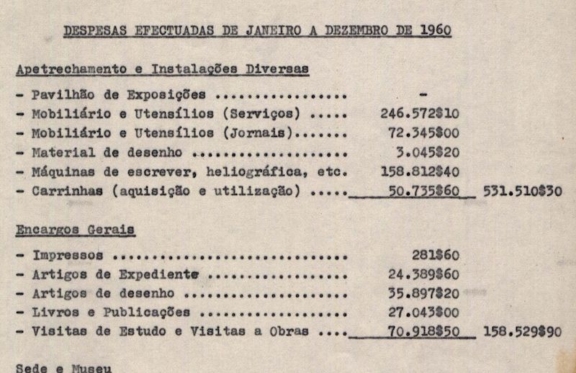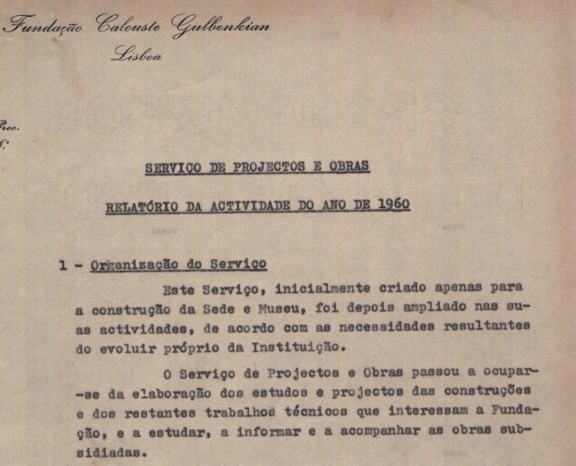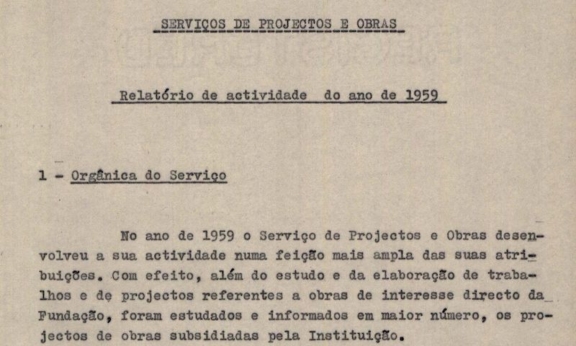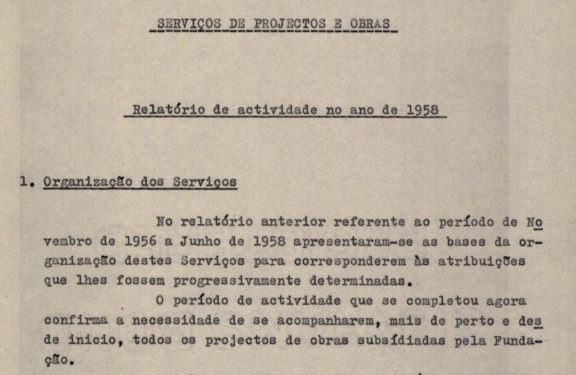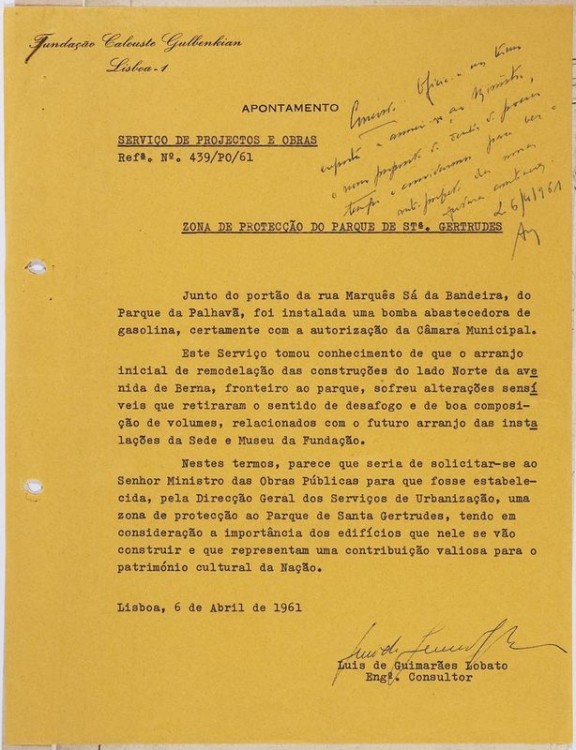
Descriptive Document
Descriptive report presented by landscape architects Gonçalo Ribeiro Telles and António Facco Viana Barreto, the first generation of Portuguese landscape architects and followers of Francisco Caldeira Cabral.
The Park programme presented by these young landscape architects reveals the revolution being implemented by a new generation of professionals in landscape design in Portugal.
It is innovative, not only nationally but also in the European context, because it sets out an entirely new conceptual framework and practice.
In the dozen points referenced in the Preliminary Draft Plan, the following phrases are highlighted: “(…) The walk, an essential element of life in the park and the arrangement of courtyards and interior spaces. Their dynamic aspect (…)”, respectively set out in points 5 and 9 of that plan. In the basic concepts presented in the General Ideas of the Design, the following phrases are important: “The naturalist conception of the architectural line of the building (…) the interest of the founder in Nature and (…) Movement: a fundamental element of the Park’s conception. Growth, Seasons, Life.”
All these phrases talk about movements:
– The movement of those who walk in the park;
– The movement of the seasons;
– The movement given by the life inherent to the substance that constructs this space.
Some of these principles are axioms of the Modern Movement. Articulating them, Gonçalo Ribeiro Telles and António Barreto explain the ideological framework of the team of architects which allowed them to affirm that in planning the park, the “naturalist conception of the architectural line of the building is essential. Naturalist because it focuses all its image on the interior needs”, in the proper and natural functioning of the park. [i]
In addition, the garden would express a proper functional logic: that of natural processes and that dictated by the purpose of being a garden.
Contents of the Preliminary Draft
Descriptive memories of the definitive draft
Preliminary Draft – General Plan
Draft Project – Implantation Plan
Preliminary Draft – Circulation
Preliminary Draft – Main Views
Draft Project – Profiles Location
Preliminary Draft – Work Elements
Preliminary Draft – Execution Plan
[i] January 4, 1961, Minutes 188 of the meeting of the Delegated Committee – “Eng. Lobato updated the delegated committee on the development of the activities of the team of architects in charge of preparing the headquarters and museum plan. He has informed them a complete revision was made of the preliminary draft, in accordance with the recommendations of the Consultant Architects… On the other hand, he explained that the study of the façade was less advanced, since the new processes of architectural work have been followed, meaning that the façade would be dictated by the needs of the interiors, in contrast to what was previously done. Regarding the façade, the only thing that can be done is that all the technicians are in agreement that it should be sober, dignified, and representative of the institution … although it should be, from the architectural point of view, of our time, not avant–garde (…). He also informed the meeting that acoustic measurements had already been made in Santa Gertrudes Park, the first carried out in Portugal, in order to determine the necessary protection measures in our future installations against external noise. (…) Concerning the progress of the work, Mr. Lobato predicts that the preliminary draft will be delivered next March to the Lisbon City Council and that the construction of the underground car park will begin next summer (…) Finally, Eng. Lobato confirmed that all facilities should be ready by the end of 1964.” Folder 112, Proc. 95, vol. 1B.
- Production date: 31/12/1961
- Designers (main authors): BARRETO, António Facco Viana, TELLES, Gonçalo Pereira Ribeiro
- Project phase: Do concurso ao anteprojeto
- Identifier: PT FCG FCG:SPO-S002-D00025
- Temporal coverage: 1961
- Type of data: Document
- Extension format: 5 p.
- Media format: pdf
- Keywords: descriptive document
In order to consult the original version of this document you should contact the Gulbenkian Archives by e-mail [email protected] and refer the document´s ID

